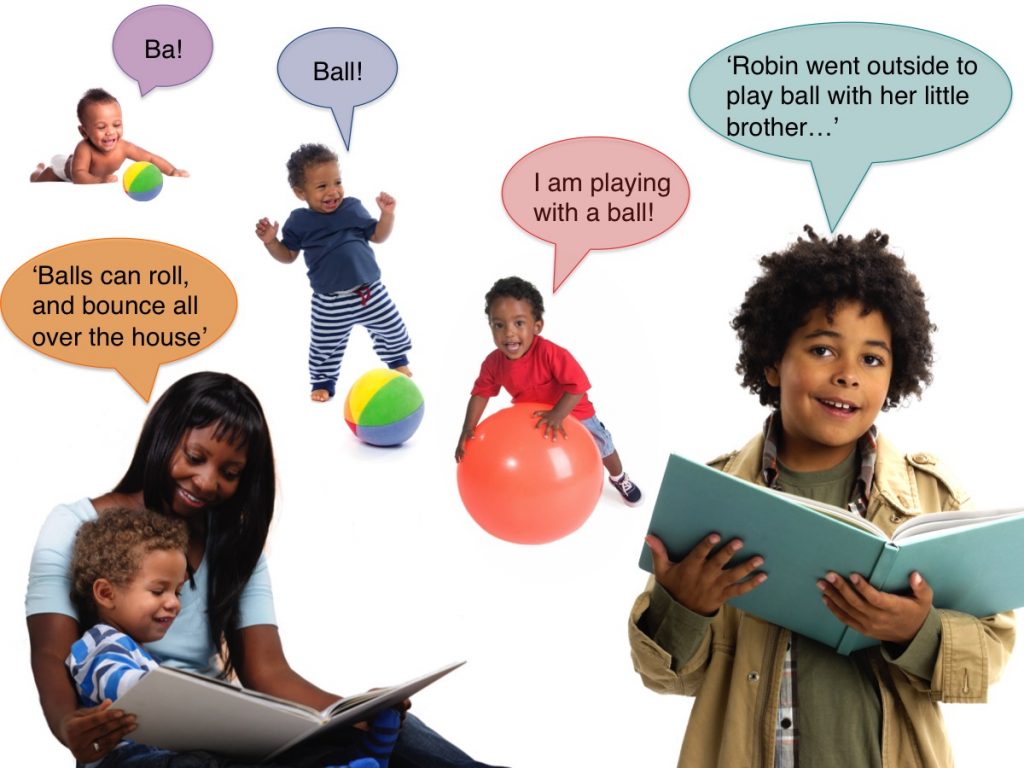
Children are born with the ability to master language. From individual sounds, to words, to sentences, children appear to learn language with ease. The modules “Language Development” I and II discuss this process. Children learn language in an environment filled with infant-directed speech, conversation, and face-to-face interactions. In this environment, children’s brains establish a complex system of communication and expression. After a child develops language, the next major challenge is learning to read and write. Literacy, or the ability to read and write, gives a child the ability to explore stories and imagination. Literacy is also an essential tool and skill that they will need for the rest of their lives. It is important to recognize that literacy develops differently than language. Reading skills are built on the foundation established through spoken language skills. But the brain is not born to read. Literacy involves years of systematic instruction and practice. It is no small feat to teach and learn in 2000 days what has taken humans more than 2000 years to develop.
-
- Auditory
- related to hearing
- Genes
- the inherited biological ‘recipe’ for appearance and other individual characteristics
- Literacy
- the ability to read and write
- Neurons
- cells located in the brain and throughout the body that are specialized to communicate messages
- Phoneme
- the smallest unit of speech (a sound)
- Phoneme “play”
- manipulating sounds that make up words
- Phonological awareness
- the ability to identify and manipulate individual sounds in spoken language
- Primary visual cortex
- an area in the brain responsible for interpreting visual information
- Retina
- neural cells at the back of the eye that are sensitive to light
- Skilled reader
- a reader who is able to focus on comprehension, rather than on sounding out words
- Visual word form area
- the area of the brain responsible for recognizing words during reading